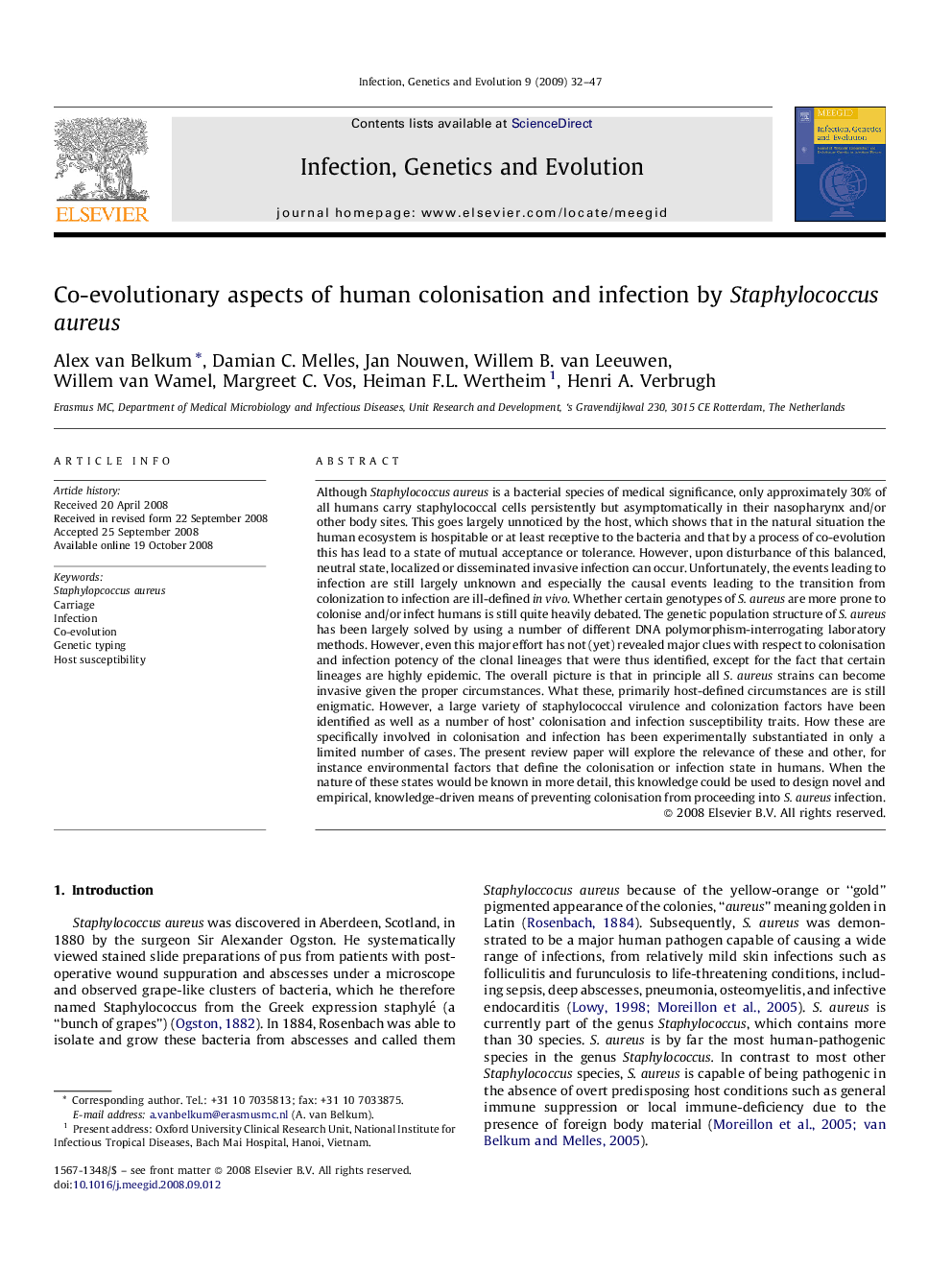| کد مقاله | کد نشریه | سال انتشار | مقاله انگلیسی | نسخه تمام متن |
|---|---|---|---|---|
| 2823458 | 1161389 | 2009 | 16 صفحه PDF | دانلود رایگان |

Although Staphylococcus aureus is a bacterial species of medical significance, only approximately 30% of all humans carry staphylococcal cells persistently but asymptomatically in their nasopharynx and/or other body sites. This goes largely unnoticed by the host, which shows that in the natural situation the human ecosystem is hospitable or at least receptive to the bacteria and that by a process of co-evolution this has lead to a state of mutual acceptance or tolerance. However, upon disturbance of this balanced, neutral state, localized or disseminated invasive infection can occur. Unfortunately, the events leading to infection are still largely unknown and especially the causal events leading to the transition from colonization to infection are ill-defined in vivo. Whether certain genotypes of S. aureus are more prone to colonise and/or infect humans is still quite heavily debated. The genetic population structure of S. aureus has been largely solved by using a number of different DNA polymorphism-interrogating laboratory methods. However, even this major effort has not (yet) revealed major clues with respect to colonisation and infection potency of the clonal lineages that were thus identified, except for the fact that certain lineages are highly epidemic. The overall picture is that in principle all S. aureus strains can become invasive given the proper circumstances. What these, primarily host-defined circumstances are is still enigmatic. However, a large variety of staphylococcal virulence and colonization factors have been identified as well as a number of host’ colonisation and infection susceptibility traits. How these are specifically involved in colonisation and infection has been experimentally substantiated in only a limited number of cases. The present review paper will explore the relevance of these and other, for instance environmental factors that define the colonisation or infection state in humans. When the nature of these states would be known in more detail, this knowledge could be used to design novel and empirical, knowledge-driven means of preventing colonisation from proceeding into S. aureus infection.
Journal: Infection, Genetics and Evolution - Volume 9, Issue 1, January 2009, Pages 32–47